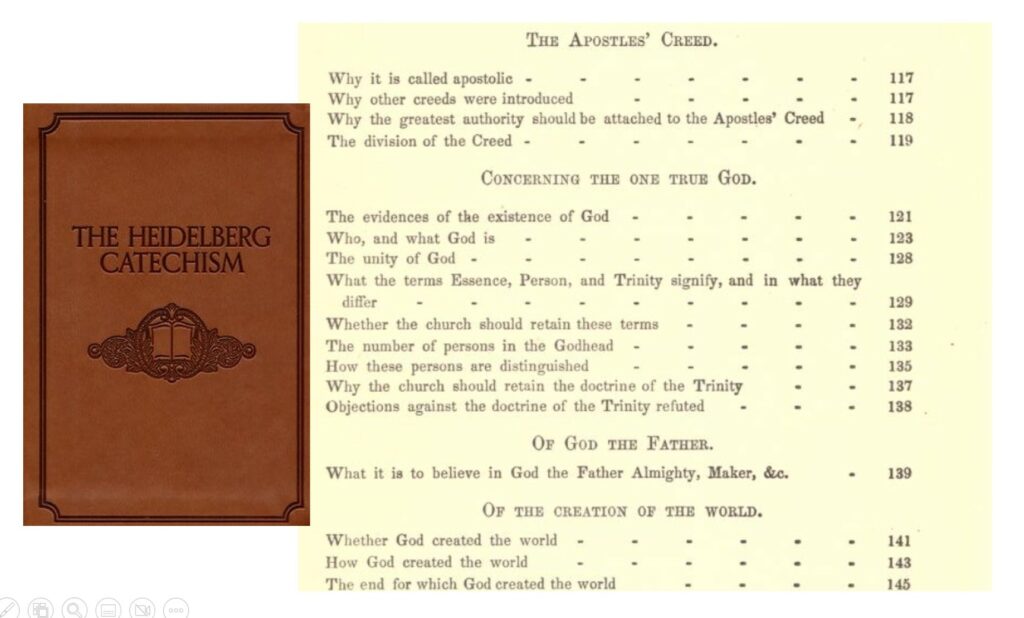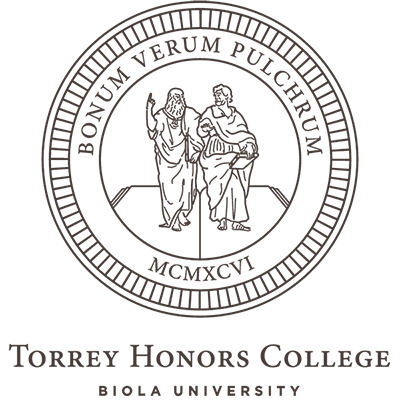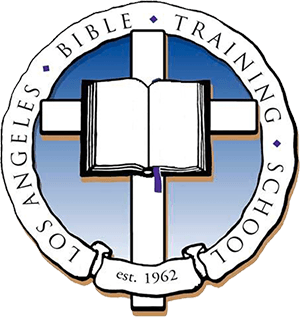A scene from The Canterbury Psalter (12th century)
Blog
Easy Trinity, Hard Trinity

There’s a kind of back and forth involved in teaching about the triune God. You have to be able to state the doctrine briefly, but be prepared to unfold it at greater length. The brief and easy statement needs to be clear and satisfying, and then the longer statement needs to not contradict the brief one.
I find this back and forth movement throughout the Christian tradition, and though I’ll illustrate it by looking at the Heidelberg Catechism, I could also have used examples from the fourth, fifth, or thirteenth centuries. But it’s a movement of thought often missing in current conversations about the Trinity.
Here’s the example: Question 24 of the Heidelberg Catechism asks how the three articles of the Apostles’ Creed are divided, and answers:
Into three parts:
God the Father and our creation;
God the Son and our deliverance;
God the Holy Spirit and our sanctification.
It’s a handy summary statement. It serves as an advance organizer for further teaching about the Father (questions 25-28), the Son (questions 29-52), and the Holy Spirit (question 53 and following). And it gives the student clear handle, attaching each person of the Trinity to an important divine work: Father to creation, Son to deliverance, Holy Spirit to sanctification. Heidelberg question 24 is well worth committing to memory because it accurately explains the inner logic of the Apostles’ Creed and helpfully draws together the witness of Scripture. And it does so briefly, simply, clearly.
But wait, there’s more. Not in the Heidelberg Catechism itself, which is a work that masterfully maintains a consistent level of instruction. It would never dip down to a simpler level of discourse, or lurch up to more complex terminology. But one of the authors of the Catechism, Zacharius Ursinus, wrote an extensive commentary on the HC, which runs to 700 pages of detailed explanatory work. In his commentary, Ursinus doesn’t so much carry out a new performance on the basis of the original work, as he goes back and elaborates the theological reasoning underlying the short, simple statements of the popular-level work. Where the Heidelberg Catechism concealed its craftsmanship, Ursinus’ commentary shows you the hammers and saws used in its construction. Or better, he gives a home-inspector’s tour of the floor joists and roof trusses that the house’s inhabitants don’t normally see, but that account for why the house doesn’t creak. Or simpler, he lifts the hood of the car and shows why it goes vroom vroom when you step on the pedal.
On the Trinity, Ursinus’ commentary provides 20 pages of information. 20! He shows the biblical sources of the doctrine, names errors and heresies, introduces and refutes objections, and teaches how to make distinctions in the use of key terms. It’s all there. So if you want to see the back and forth movement from simple statement to complex statement of this central Christian doctrine, just compare the way the Heidelberg Catechism talks about the Trinity to the way Ursinus’ Commentary talks about it. Same trinitarianism; two levels of explanation.
But let me be more specific. In his commentary, Ursinus immediately raises and answers this objection: The Heidelberg Catechism, following the Apostles’ Creed, says the Father creates, the Son redeems, and the Spirit sanctifies. The objection is: it seems as if “therefore the Son and he Holy Ghost did not create heaven and earth; neither did the Father and the Holy Ghost redeem the human race; nor do the Father and the Son sanctify the faithful.”
Ursinus has two replies: biblical and doctrinal.
The biblical reply is to skim through Scripture and demonstrate that all three persons can be identified as working in all three actions. This is Ursinus’ idea of a good time. Here’s his quick run-through (I’ve emphasized the transitions):
For the Father also redeems us, because “he delivered up his Son for us;” “sent his son into the world, that the world through him might be saved.” (Rom. 8 : 32. John 3 : 17.) The Father also sanctifies us according to what Paul says: “God hath sent the Spirit of his Son into your hearts, crying, Abba, Father.” ” The very God of peace sanctify you wholly.” (Gal. 4:6. 1 Thes. 5 : 23.) So the Son creates us, for “all things were made by him.” (John 1 : 3.) He also sanctifies us, because “he is made unto us, of God, sanctification.” (1 Cor. 1 : 30.) He “sanctifies and cleanses the church with the washing of water, by the word.” (Eph. 5 : 26.) He gives the Holy Spirit, for he says : “I will send the comforter,” &c. ” He hath shed forth this which ye now see and hear.” (Acts. 2 : 33.) The same thing is also to be said of the Holy Ghost, for he also created the heavens and the earth. ” The Spirit of God moved upon the face of the waters.” ” By the word of the Lord were the heavens made, and all the- hosts of them, by the breath of his mouth”. (Gen. 1 : 2. Ps. 33 : 6.)
Second, based on this biblical information, Ursinus goes on to display three doctrinal tools, or theological processes that were already up and running in the background when the Heidelberg Catechism said what it said:
- Inseparable operations. “The works of the Trinity are indivisible.” Or more fully, “the works which the persons of the Godhead perform out of themselves, that is, such as they perform in reference to creatures, are indivisible, that is, they cannot be attributed to any one person of the Trinity without respect to the other persons.” (p. 120; see also p. 137)1
- Appropriations. Though the works are indivisible, nevertheless we follow Scripture in attributing some works to particular persons, not as if that person exclusively did them, but because the work itself is instructively similar to the person’s character.
- Order of Subsistence. That instructive similarity is a similarity between the outward work and the internal, eternal order in which the persons subsist with each other: Father, Son, Spirit. Creation reminds us of the character of the Father because it is instructively similar to the Father’s identity as source of the Son and Spirit. “The works of the Trinity are indivisible, but not in such a sense as to destroy the order and manner of working peculiar to each person of the Godhead.” (p. 120) That order is founded on eternal generation and spiration (about which we have much to say).
These three doctrinal moves are tools that require some practice in using. The first few times you hear them, they may seem artificial. They may seem almost contradictory (as if the right hand of appropriations restores what the left hand of inseparable operations removed, and voila you’ve got your Trinity back). They may sound like clever explanations devised ad hoc to justify sloppy ways of talking about God the Father as creator. And each of them ought to be not just passively received on the basis of authority, but ought to be (and can be) justified by demonstrative argument from Scripture and proper reasoning.
But here’s my point: The Heidelberg Catechism and Zacharias Ursinus’s commentary have the same theology of the Trinity, but are stating it at different levels of difficulty. Plenty of Christians rarely need to go beyond the Heidelberg Catechism‘s level of complexity. How can you tell if that’s an appropriate level for you? Well, if I say “God the Father creates; God the Son redeems,” and it never even occurs to you to ask “doesn’t the Son also create, and the Father also redeem?” you may be comfortably ensconced in the catechetical level of affirming the biblical doctrine of the Trinity. Totally fine. Probably no need for you to lift the hood, have opinions about the carburetor’s air-and-fuel mix. But if your inquiring mind goes on to start drawing faulty conclusions, you might need to learn more. For instance, if you start thinking, “All I know is the Heidelberg Catechism says the Bible says the Father creates, so that means therefore that the Son does not,” then you’re going to need to go a little deeper into why you believe what you believe. And that means you’ll need to mug up on inseparable operations, appropriations, and (pardon my scholastic accent) the order of subsistence. Hard Trinity? Yes, for the sake of easy Trinity.
In some circles these days, you’ll hear people make a dichotomy between simple faith in the Trinity on the one hand, and the more elaborate theological account of the doctrine on the other hand. In some circles, you’ll be warned to avoid scholasticism, you’ll be told it’s an alien influence on the purity of simple belief. You might overhear teachers (theologically trained people, entrusted with the authority to instruct others, that is, folks who ought to know better) pretending to be baffled by what they consider the mumbo jumbo of inseparable operations and appropriations. But don’t you believe it. The Heidelberg Catechism‘s theology of the Trinity is the same as Ursinus’ explanation of it. Easy Trinity has always had Hard Trinity going on underneath it.
_________________________
1The words I’m quoting here (if you check against the original text) are taken from an objection, but they are the part of the objection Ursinus affirms (inseparable operations). What Ursinus denies is the conclusion drawn from this, that there is never any reason to speak of a particular person of the Trinity doing a particular work. In doctrinal terms, his opponent is claiming that the principle of inseparable operations excludes the principle of appropriation; Ursinus is arguing that they belong together.
About This Blog

Fred Sanders is a theologian who tried to specialize in the doctrine of the Trinity, but found that everything in Christian life and thought is connected to the triune God.


